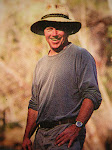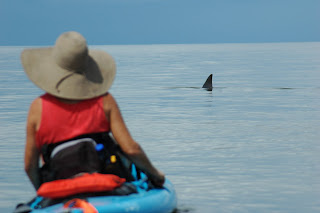Time: 10:00 a.m..
Cost: $45 for "wanna go" members ($60 for non-members). With your own boat it's $35 for members and $45 for non-members.
Location: About 1 hr. drive west of Gainesville.
Tour length: 3.5 - 4 hrs.
Difficulty: Moderate. Can be more of a workout if breezy. If too windy, we don't go out.
Description
This is a 3.5 - 4-hour paddle, which includes a half hour stop on a beautiful island beach for lunch and a bit of beach combing.
Driving west toward Cedar Key, one hardly notices the slow drop in elevation--only about a foot per mile as you approach the coast. Leaving the pine flat-woods and sandy, scrub ridges, you notice the roadside ditches becoming wetter and filled with a beautiful assortment of wetland plants. Pine forests give way to hardwood swamps, crowded with bays, hollies, and red maples.
Nearing the Gulf, a gust of warm air, tinged with sea-salt, tells you you're getting close. Another bend in the road and you're treated to one of the rarest of Florida offerings, a wide-open vista. The forest ends unnoticed as your gaze is drawn to a vast expanse of salt marshes, scattered islands and open water stretching to the horizon.
The hundreds of little islands that line this watery coast, range in size from barren, half acre sand-spits to mile-wide islands with full forest of palms, oaks and other species of the coastal hardwoods. For the mindful paddler who takes the time to truly explore, the species-rich communities that crowd these islands never get boring. And, if you lose track of time and suddenly find that you've run out of daylight (I'm speaking from experience here), that's not so bad either. As dusk settles and all you can hear are the breezes, you'll be treated to a famous Gulf Coast sunset, where the silhouettes of palms, wind-gnarled oaks, pines and mangroves are cast against a smoldering sun. It's the stuff of dreams; a place where all the world is right.
In 1867, naturalist John Muir described Cedar Key as being "surrounded by scores of other keys, many of them looking like a clump of palms, arranged like a tasteful bouquet, and placed in the sea to be kept fresh. Others have quite a sprinkling of oaks and junipers, beautifully united with vines. Still others consist of shells, with a few grasses and mangroves circled with a rim of rushes."
Wildlife watching is great in this area, especially for birders. Pelicans (brown year-round and white in summer months), osprey, cormorants, gulls, oystercatchers, skimmers and a dizzying menagerie of plovers and waders will keep your binoculars hoisted. In warm months (and sometimes in winter) we see magnificent frigate birds soaring on elegant, long wings (the largest wing-to-body size ratio of any birds). We often see bottle-nosed dolphins on this trip, as well as rays and other fish. In summer months, manatees sometimes pop their head up for a peek at who's paddling past.
History
In addition to its richness of wildlife, the Cedar Key area has many archaeological sites. When the earliest Floridians arrived over 15,000 years ago, their lives revolved around following the roaming herds of huge Ice Age mammals, Mammoths, mastodons, giant camels and Galapagos style tortoises were on the menu. Later--thousands of years later--warming temperatures ended the Ice Age and the "mega fauna" adapted to it. For the native people, these changes meant adapt their diet and lifeways or perish. They adapted, beautifully.
By 2,000 - 3,000 B.C., the coastal people were living in permanent villages on higher ground. Seafood dominated their diet, especially shellfish, as revealed by the area's many large shell middens, or mounds. where generations of villagers tossed their table scraps. Oyster, conch and whelk shells dominate these heaps. However, their diet was more diverse than appearances suggest. Researchers have identified remains of many other species--both land and sea animals--as well as plant remains among the smaller bits between the shells. These middens are found on the nearby mainland and on many of these islands, including some which we will explore on this trip.
During the Second Seminole War (1835 - '42) Seahorse Key, near Cedar Key, was the location of a military hospital and a detention center where Indians were kept before being shipped west to the Indian Territories. On nearby Atsena Otie island, the army built a supply depot.
After Florida became a State, the U.S government built a lighthouse on Seahorse Key. Later, during the Civil War, it was used by the Union Army as a military prison.
In the final decades of the 19th century, three large pencil-manufacturing mills were operating on the island. Between them, they buzzed nearly 100,000 cedar trees per year into pencils which were shipped to distant ports. The town's population grew to nearly 300 before the region's cedar trees were virtually wiped out and the mills were forced to close. The area took a second hit when, about that same time, a hurricane destroyed most of the homes.
Paddlers who visit this small island, can enjoy a short hike to the old graveyard where they can find the graves of some notable characters in Cedar Keys earlier days. Pirates, pioneer families, politicians and mill workers are among the silent residents of this island.
Highlights
In addition to being a haven for an amazing assortment of water birds and interesting sea life, this trip's open waters and the chance to do a bit of beach combing are a nice change of pace from our inland excursions. Dolphins and, less frequently, manatees sometimes swim past. And no, those small fins circling your boat are probably not sharks! They're far more likely to be the tips of ray "wings" or the fins of "tailing" redfish.
Difficulty
This is a moderately strenuous (depending on the strength of breezes) paddle on open water. We sometimes encounter small chop and wave action as we cross deeper channels between some of the barrier islands. If it's uncomfortably breezy or the water is choppy, we won't go out.


No comments:
Post a Comment